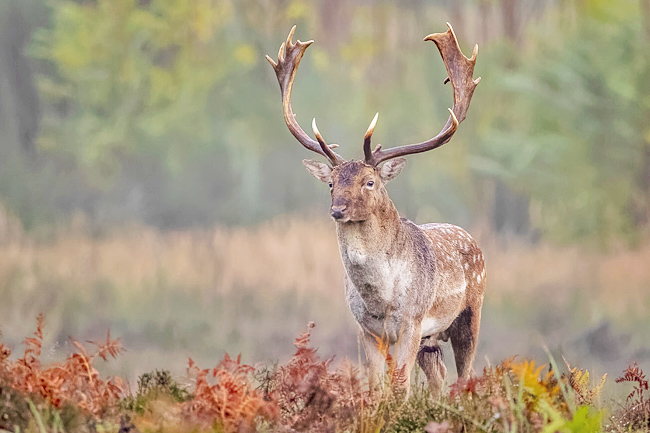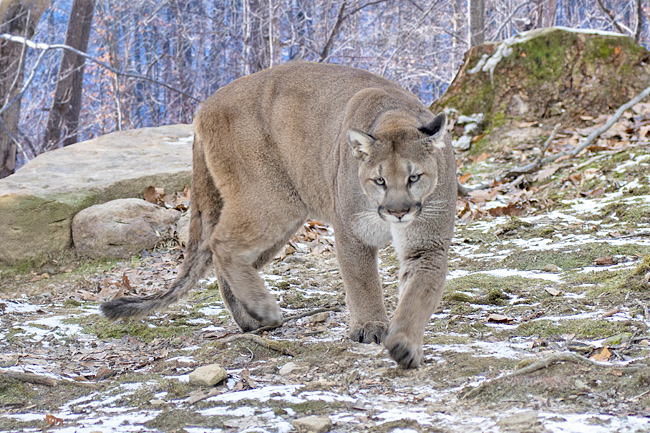THE WASHINGTON POST – Bears roaming the streets of Italy. Pumas prowling cities in California. Goats taking over towns in Wales.
As people hunkered at home to stop the spread of the coronavirus in early 2020, they swapped stories online of wildlife reclaiming urban spaces outside their windows.
Now a massive study of GPS tracking data on bears, deer, elephants, giraffes and some 40 other terrestrial mammals around the world confirms many animals roamed further and appeared to act more at ease without humans around.
“It’s obvious that we’re having an impact on animal behaviour,” said Marlee Tucker, an ecologist at Radboud University in the Netherlands who led the study published in the journal Science. What is more surprising, she added, is that even “small changes in our behaviour could actually be quite beneficial” for wildlife.
The unprecedented and accidental experiment that was the coronavirus pandemic allowed the ecologists to show how perceptive other creatures are to the presence of humans – and how quickly they can alter their behavior when we aren’t bothering them.
The work, which involved 175 wildlife researchers, suggests new ways to protect wildlife now that the pandemic is over – without, that is, having to urge everyone to stay at home again.
“The most striking thing was that the responses were occurring over a very short period of time,” said Colleen Cassady St Clair, a professor of biological sciences at the University of Alberta who was not involved in writing the paper. “And it suggests that several species are very reactive to human activity.”



A growing body of research into the slowdown in human activity during the pandemic – a brief period scientists call the “anthropause” – shows the complex ways ecosystems responded when they were suddenly devoid of people.
Sometimes, the absence of humans was a beneficial reprieve for wildlife. At other times, the anthropause came at animals’ detriment.
Like a lot of the best science, it began by accident.
In the years leading up to 2020, dozens of scientists around the world put tracking collars on elephants, giraffes, bears, deer, lions and other animals for their own separate research projects. At the time, none of them suspected their data would help us understand the effects of a global health crisis.
But once COVID began sweeping the globe, Tucker started making calls and sending emails to researchers tracking wildlife. Having spent much of her career studying wildlife movements around humans, she and her colleagues knew the pandemic was “quite a unique opportunity”.
In total, the GPS coordinates the team gathered from 2,300 terrestrial mammals showed a wide variety of responses, but a few trends emerged.
Many animals became more adventurous during the beginning of the pandemic, travelling distances up to 73 per cent longer compared to the year prior in areas with the strictest COVID orders.
Among the biggest daredevils were brown bears in the Italian Alps. Around the city of Trento, the normally skittish carnivores raided chicken coops, pillaged garbage cans and wandered straight into the village centers during lockdowns.
“All these are very rare events,” said Andrea Corradini, an ecologist at the Edmund Mach Foundation in Italy, “yet several instances were reported over the course of two months during the lockdown.”
Pumas in California are, too, are normally leery of populated areas. But during closures in the San Francisco Bay Area, the cats inched closer to urban areas, sometimes patrolling right through them.
But just as quickly, the pumas retreated. “As soon as society opened back up again and people were back out driving and walking on the streets, they reverted right back to how they had been before,” said Chris Wilmers, a professor of wildlife conservation at the University of California at Santa Cruz.
Although the tracked animals roamed longer distances, they moved less during short, one-hour timespans because fewer people were around to spook them. And with fewer cars on the roads, many animals also inched closer to normally bustling thoroughfares in search of food and other resources.
“That kind of blew my mind – that kind of insidious effect of traffic,” said Amanda Bates, a biology professor at the University of Victoria who helped coin the term anthropause.
For many species, the hiatus from humans was clearly a boon. Sea turtles in Florida, for instance, appeared to thrive after beachgoers packed up their umbrellas, other researchers have shown. The same was true for turtles on the Greek island of Zakynthos.
But ecosystems are complicated, with humans wittingly (or unwittingly) playing a role.
For instance, researchers working to protect seabirds by ridding Gough Island in the Atlantic of invasive mice had to postpone the project during the pandemic.
And the absence of tourists on the Swedish island of Stora Karlso caused a sevenfold increase in white-tailed eagles compared to the previous year. That’s good for the raptors – but bad for a type of seabird called the common murre that the eagles liked to disturb.
Humans, whether they knew it or not, were helping guard the murres from bigger birds.
For St Clair, the ill effects road traffic has on wildlife underscores the need for physical barriers – for the protection of both animals and the people that can crash into them.
“A good solution for coexistence with wildlife, especially wildlife that can inflict injuries on people, is to have quite clear segregation,” she said.
Another lesson of the COVID closures: Sometimes it’s good just to give wildlife more space to be wild. – Dino Grandoni






